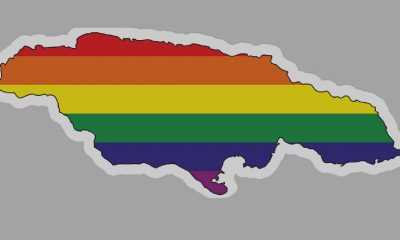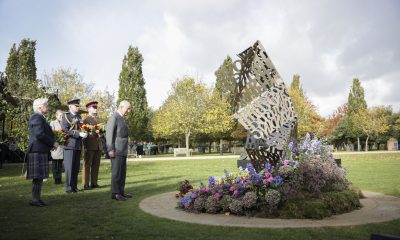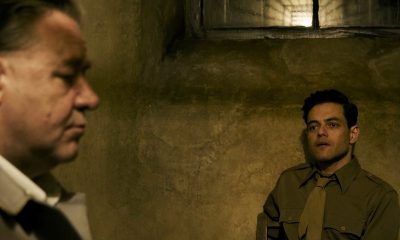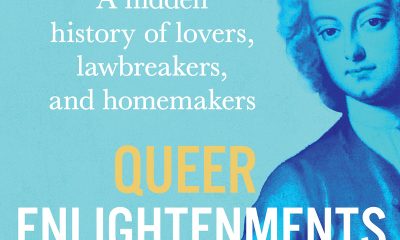Books
Catching up with ‘Rainbow Milk’ author Paul Mendez
Widely praised novel began as memoir
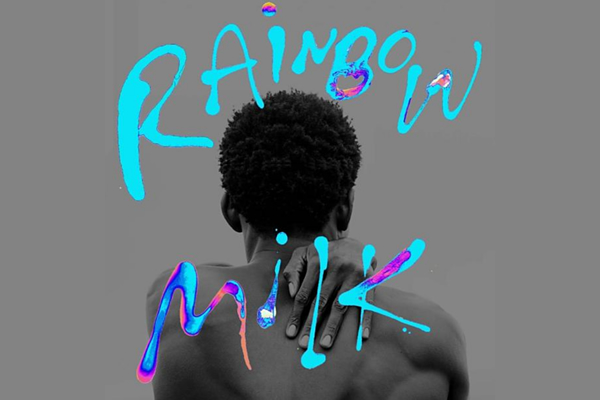
In 2004, Black, gay writer Paul Mendez, then 22, was in London, studying acting. To pay for the acting classes, he was a sex worker.
Today, Mendez, now 39, is one of the hottest authors on the literary scene. His debut novel “Rainbow Milk,” published in the United Kingdom last year and released this month in the United States, has received wide praise.
The BBC, the Observer and other U.K. outlets put “Rainbow Milk” on their best books of 2020 lists.
Recently, Mendez spoke with the Blade on FaceTime about a range of topics.
Mendez grew up in a working class family as a Jehovah’s Witness in Dudley, a town in an industrial region called the Black Country in the West Midlands, a county in central England.
His grandparents came to the U.K. from Jamaica as part of the Windrush generation.
The term “Windrush generation” refers to people from Caribbean countries who emigrated to the U.K. between 1948 and 1971. They were encouraged to come to the United Kingdom because of labor shortages after World War II. Yet, they encountered racism and hostility to immigration when they arrived in the U.K.
Because of his sexual orientation, Mendez was “disfellowshipped” by his Jehovah’s Witness family and church.
Now, Mendez lives in London with his partner Alan Hollinghurst. Hollinghurst, a novelist, was born in Stroud in Gloucestershire, England in 1954. He was awarded the Man Booker Prize for his novel “The Line of Beauty.”
“Rainbow Milk” begins in the 1950s. Norman and Claudette, middle-class newlyweds in Jamaica emigrate to England. They’re part of the Windrush generation. They hope their future will be better in the U.K. But, on arriving there, they encounter racism and have trouble finding suitable work. When Norman starts to lose his eyesight, the family’s survival is at risk. Norman narrates this part of the novel in the first person.
The rest of “Rainbow Milk” takes place 50 years later. Here, we meet the protagonist of the novel: Jesse McCarthy, a young Black, gay British man. Jesse is Norman’s grandson.
Jesse’s mother is Black and his stepfather is white. He’s never known his father who left the family when he was a baby. He and his working-class family, who are Jehovah’s Witnesses, live in the industrial region of the Black Country.
Nineteen-year-old Jesse is bright and a devout Jehovah’s Witness. He is considered to be a potential leader by members of the church. But Jesse begins to think he might be queer. He knows he needs to keep this a secret.
His attempt at secrecy fails. Jesse is disfellowshipped by Jehovah’s Witnesses after a church member outs him.
In 2002, Jesse escapes to London to create a life for himself as a queer, Black working-class man. Jesse becomes a sex worker to stay afloat and explores his sexuality. He reckons with race, class, sexuality, and spirituality in his search for self-discovery, freedom and the stability of a chosen family.
“You’ve lost your center of gravity,” a friend says to Jesse, “so to survive, you’ll need to take steps to create another.”
In “Rainbow Milk,” Jesse evolves from a young man (not yet out of his teens) trying to navigate life in a strange city into an adult who’s a writer in a stable queer relationship.
There are some similarities between Jesse and Mendez. Both are Black, queer and were disfellowshipped by the Jehovah’s Witnesses. They’re British with a Jamaican heritage, they both moved to London and became sex workers as well as writers.
“Rainbow Milk” is both “autobiographical and fictional,” Mendez said. Yet, though it has elements of autobiography, “It’s a work of fiction,” he said. “I’ve created unique scenes that I didn’t go through personally, but I went through, maybe, something similar, with other people.”
He created characters “with interiors,” Mendez added. One difference: Jesse moved to London at a different age and year (at 19 in 2002) than when Mendez moved to London (at age 22 in 2004).
Mendez researched what London was like then and created characters who didn’t share his story.
Jesse, for instance, has a white father. Mendez’s dad is Black and married to his mother.
“It became interesting for me to examine what it’s like to be raised as a Black person without any sense of [Black] heritage,” Mendez said.
It’s hard to answer the question of whether a novel is autobiographical, Mendez said. Hollinghurst, for instance, went to boarding school, studied at Oxford, became an editor at a literary journal and then a novelist.
“That’s the kind of world, he writes about,” Mendez said, “but they’re not him.”
People should be able to tell the difference between a memoir and a work of fiction, he added.
“Rainbow Milk” began as a memoir but his publisher challenged Mendez. “She recognized that I wasn’t going all the way,” Mendez said, “I was protecting people. I was reticent when it came to discussing some of the most difficult moments that I’d been through.”
The novel began to flow when he switched to fiction and began writing in the third person. “I wasn’t reopening old wounds,” Mendez said.
Mendez has been a performing member of two theater companies and worked as a voice actor, appearing on audio books by Andrea Levy, Paul Theroux and Ben Okri. He narrates the audio version of “Rainbow Milk.” Mendez has contributed to “Esquire,” “Vogue” and other publications. He is studying for an M.A. in Black British Literature at Goldsmiths, University of London.
Because he’s so busy, Mendez is taking a year off from his studies. He’s thinking about his second novel and working with a production company to adapt “Rainbow Milk” into a TV series.
Adapting “Rainbow Milk” for TV has been different for Mendez from working on “Rainbow Milk” first as a memoir, then as a novel.
“In picking apart ‘Rainbow Milk’ to construct 10 episodes,” Mendez said, “you do see where the narrative thread could have been worked out a little bit better.”
“It will be wonderful to see a visual Jesse,” Mendez added.
“Rainbow Milk” came out in the U.K. soon after George Floyd was murdered. In the aftermath of Floyd’s death, voices like his and other Black writers in the U.K. have been more sought after, Mendez said.
“It’s felt at times that I’m the name on everyone’s lips,” Mendez said. “We need a Black person. Let’s call Paul Mendez. We’ve heard of him.”
“I think only five books by five Black British men have been published over the last five years,” Mendez said.
There is hope that this will change. Mendez is a member of the Black Writers Guild, which was formed last June. “We’ve come together to hold the mainstream publishing industry to account,” he said.
The Guild wrote an open letter to the “big five” publishers in the U.K. calling upon the overwhelming white publishing industry to become more inclusive.
“They all vowed to work closely with me to help effect change,” Mendez said, “it’s what are we going to do in the long term to systematically include Black voices in the publishing industry?”
Books are the way to change people’s lives, he added.
Books
New book highlights long history of LGBTQ oppression
‘Queer Enlightenments’ a reminder that inequality is nothing new
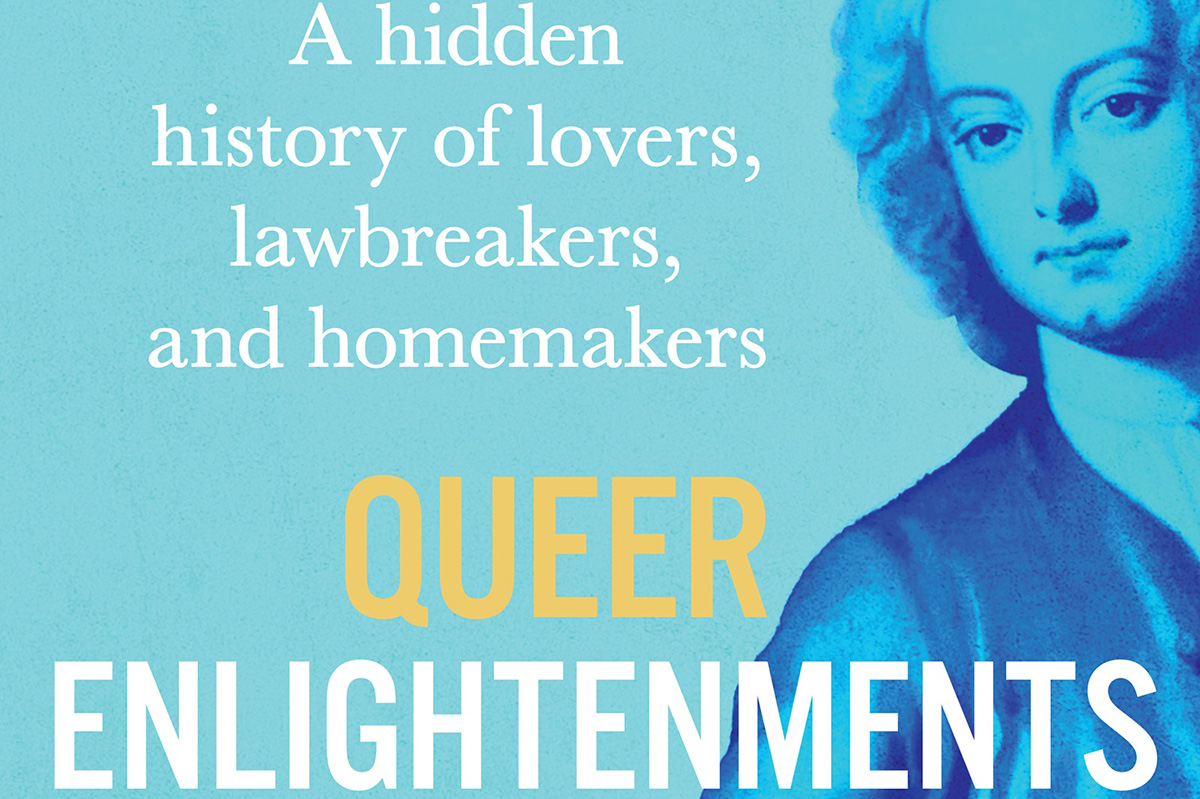
‘Queer Enlightenments: A Hidden History of Lovers, Lawbreakers, and Homemakers’
By Anthony Delaney
c.2025, Atlantic Monthly Press
$30/352 pages
It had to start somewhere.
The discrimination, the persecution, the inequality, it had a launching point. Can you put your finger on that date? Was it DADT, the 1950s scare, the Kinsey report? Certainly not Stonewall, or the Marriage Act, so where did it come from? In “Queer Enlightenments: A Hidden History of Lovers, Lawbreakers, and Homemakers” by Anthony Delaney, the story of queer oppression goes back so much farther.

The first recorded instance of the word “homosexual” arrived loudly in the spring of 1868: Hungarian journalist Károly Mária Kerthbeny wrote a letter to German activist Karl Heinrich Ulrichs referring to “same-sex-attracted men” with that new term. Many people believe that this was the “invention” of homosexuality, but Delaney begs to differ.
“Queer histories run much deeper than this…” he says.
Take, for instance, the delightfully named Mrs. Clap, who ran a “House” in London in which men often met other men for “marriage.” On a February night in 1726, Mrs. Clap’s House was raided and 40 men were taken to jail, where they were put in filthy, dank confines until the courts could get to them. One of the men was ultimately hanged for the crime of sodomy. Mrs. Clap was pilloried, and then disappeared from history.
William Pulteney had a duel with John, Lord Hervey, over insults flung at the latter man. The truth: Hervey was, in fact, openly a “sodomite.” He and his companion, Ste Fox had even set up a home together.
Adopting your lover was common in 18th century London, in order to make him a legal heir. In about 1769, rumors spread that the lovely female spy, the Chevalier d’Éon, was actually Charles d’Éon de Beaumont, a man who had been dressing in feminine attire for much longer than his espionage career. Anne Lister’s masculine demeanor often left her an “outcast.” And as George Wilson brought his bride to North American in 1821, he confessed to loving men, thus becoming North America’s first official “female husband.”
Sometimes, history can be quite dry. So can author Anthony Delaney’s wit. Together, though, they work well inside “Queer Enlightenments.”
Undoubtedly, you well know that inequality and persecution aren’t new things – which Delaney underscores here – and queer ancestors faced them head-on, just as people do today. The twist, in this often-chilling narrative, is that punishments levied on 18th- and 19th-century queer folk was harsher and Delaney doesn’t soften those accounts for readers. Read this book, and you’re platform-side at a hanging, in jail with an ally, at a duel with a complicated basis, embedded in a King’s court, and on a ship with a man whose new wife generously ignored his secret. Most of these tales are set in Great Britain and Europe, but North America features some, and Delaney wraps up thing nicely for today’s relevance.
While there’s some amusing side-eyeing in this book, “Queer Enlightenments” is a bit on the heavy side, so give yourself time with it. Pick it up, though, and you’ll love it til the end.
The Blade may receive commissions from qualifying purchases made via this post.
Books
A history of lesbian workarounds to build family
Fighting for the right to have and raise kids
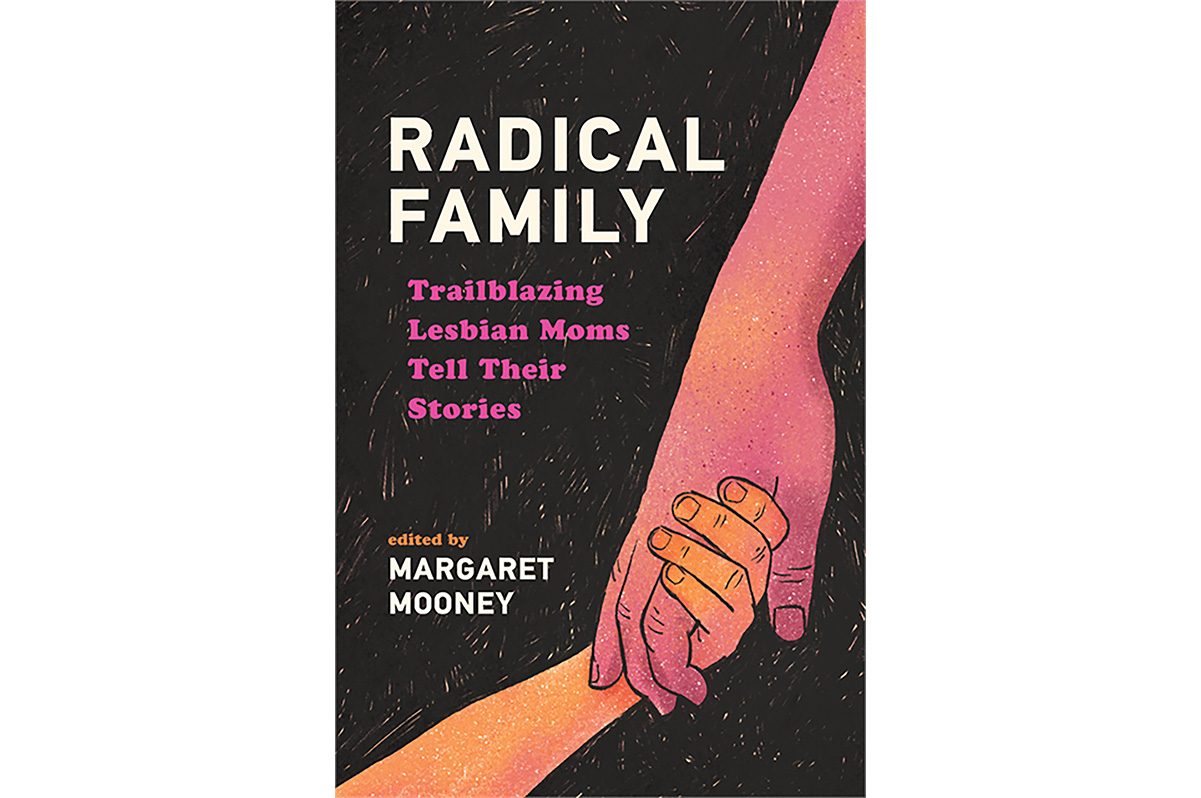
‘Radical Family: Trailblazing Lesbian Moms Tell Their Stories’
Edited by Margaret Mooney
c.2025, Wisconsin Historical Society Press
$20/150 pages
You don’t have a white picket fence with an adorable gate.
The other parts of the American Dream – the house in the suburbs, a minivan, and a big backyard – may also be beyond your reach. You’ve never wanted the joyous husband-wife union, but the two-point-five kids? Yeah, maybe that’s possible. As in the new book “Radical Family,” edited by Margaret Mooney, it’s surely more so than it was in the past.

Once upon a time, if a lesbian wanted to raise a family, she had two basic options: pregnancy or adoption. That is, says Mooney, if she was willing to buck a hetero-centric society that said the former was “selfish, unnatural and radical” and the latter was often just simply not possible or even legal.
Undaunted, and very much wanting kids, many lesbians ignored the rules. They built “chains” of women who handed off sperm from donor to doctor to potential mother. They demanded that fertility clinics allow single women as customers. They wrote pamphlets and publications aimed to help others become pregnant by themselves or with partners. They carefully sought lesbian-friendly obstetricians and nurses.
Over time, lesbians who wanted kids were “emboldened by the feminist movement and the gay and lesbian rights movement” and did what they had to do, omitted facts when needed, traveled abroad when they could, and found workarounds to build a family.
This book tells nine stories of everyday lesbians who succeeded.
Denise Matyka and Margaret McMurray went to Russia to adopt. Martha Dixon Popp and Alix Olson raised their family, in part and for awhile in conjunction with Popp’s husband. Gail Hirn learned from an agriculture publication how to inseminate herself. MC Reisdorf literally stood on her head to get pregnant. Mooney says that, like most lesbian parents then, she became a mother “without any safety nets…”
Such “struggles likely will feel familiar as you read about [the] desire to become parents…” says Mooney. “In short, these families are ordinary and extraordinary all at once.”
In her introduction, editor Margaret Mooney points out that the stories in this book generally take place in the latter part of the last century, but that their relevance is in the struggles that could happen tomorrow. There’s urgency in those words, absolutely, and they’re tinged with fear, but don’t let them keep you from “Radical Family.”
What you’ll see inside these nine tales is mostly happy, mostly triumphant – and mostly Wisconsin-centric, though the variety in dream-fulfillment is wide enough that the book is appropriate anywhere. The determination leaps out of the pages here, and the storytellers don’t hide their struggles, not with former partners, bureaucracy, or with roadblocks. Reading this book is like attending a conference and hearing attendees tell their tales. Bonus: photos and advice for any lesbian thinking of parenthood, single or partnered.
If you’re in search of positive stories from lesbian mothers and the wall-busting they did, or if you’ve lived the same tales, this slim book is a joy to read. For you, “Radical Family” may open some gates.
The Blade may receive commissions from qualifying purchases made via this post.
Books
Florida’s war on Black, queer lives hidden no more
New book ‘American Scare’ exposes truth of decades of erasure, attacks
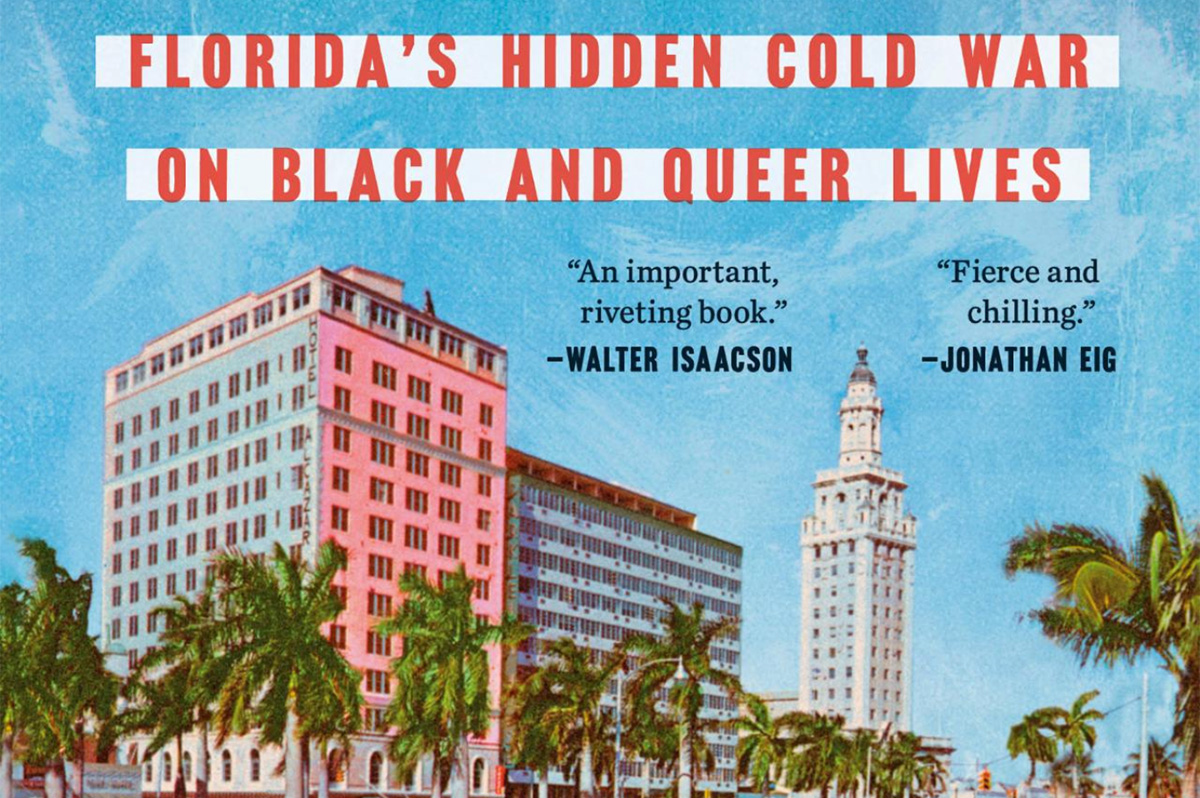
‘American Scare: Florida’s Hidden Cold War on Black and Queer Lives’
By Robert W. Fieseler
“What’s with Florida?,” Bobby Fieseler, disgusted, asked after completing his initial research into the vicious investigation of suspected homosexual teachers by the Florida Legislative Investigation Committee (FLIC) in the 1950s. How did the official animus toward all things queer happen in Florida, Fieseler pitched his publisher. We can be grateful Dutton gave him the green light for “American Scare, Florida’s Hidden Cold War on Black and Queer Lives.”

Fieseler’s book is a masterpiece of archive activism that begins in a rental van escaping Florida with some 20 boxes of historical documents meant to be seen by no one. The cartons contained a secret second copy of materials that had been held back from the jaws of the Florida State Archives in Tallahassee. Soon, more folders would surface with unredacted materials. “There are friends of Dorothy in any system,” he explains his archival detective work with a wink.
What’s with Florida? In the 1950s, it was all about legislators exposing politically helpless homosexuals to justify the committee’s investigations and budgets. The FLIC documents reveal the names of the accused “perverts,” the cops who raided the restrooms, the terrified queer informants and the professional interview techniques that would extract confessions from the victims. On another level, this was about old-school Southern racists determined to stop integration at all costs with intention to weave lies about Communist infiltration of the NAACP. Finally, Fieseler encountered first-hand an official determination to erase and lock-up this history. The statewide obsession with erasing history continues to this day. The Florida Department of Transportation this year painted over the community rainbow crosswalk memorial to the Pulse nightclub massacre victims in Orlando.
“American Scare” is such a fully documented investigation of what unfolded, it will be impossible to paint over the magnitude of this assault. The book bears witness in gory detail to the ruination of private people that exceeds in pure perniciousness the more famous “Lavender Scare.” Although the “Lavender Scare” purged many more individuals, it was about the U.S. Department of State firing public officials slimed as “pinstripe twerps.” The Florida investigations were a statewide purge using a dark politics of exposure of schoolteachers leading private lives. Fieseler quotes Remus Strickland, the head homo-hunter and executive director of the Southern Association of Intelligence Agents formed in response to the Supreme Court’s Brown v. Board of Education desegregation decision (1954), “If the Committee’s first pursuit (race and Communism) was a mandate, its second pursuit (homosexuals) was an opportunity.” Remus (that’s really this Southerner’s name) explained years later without remorse, “We first looked at the University of Florida for Communists….then we came back and did the homosexual purge.” Fieseler’s archival research reveals how far-right politicians and investigators like Strickland characterized Communists, African Americans (through the NAACP) and homosexuals as aligned “treasonously in a subversive societal infestation.”
The whole show was the creation of a wily, populist politician — a Florida “Pork Chopper” — Charley Johns, president of the Florida Senate. “Pork Choppers,” the rural, white Northern Florida wing of the old Democratic Party, controlled the state legislature from the 1930s to the 1960s. They were strongly opposed to integration, Communists, homosexuals, reapportionment and government reform. Johns owned the Charley E. Johns Insurance Agency, which insured state agencies. Fieseler’s history brings these North Florida politicians into grotesque focus. Their “power had lynched history,” he writes about his passion to excavate how they sealed and redacted the records so they would never face responsibility for their actions.
“American Scare” reveals how these Pork Choppers were willing to crush homosexuals as an instrument to maintain power. Their victims were isolated gay and lesbian teachers who could only plead for mercy, vanish or inform on one another. They were entrapped by the system itself. Fieseler tells the story of how Remus Strickland pulled Miss Poston, a physical education teacher out of her classroom surprising her with a tape recorder and a request to give a misdirecting statement about the prevention of child molestation. Suddenly Remus changed the subject: “Miss Poston, in your acts with Miss Bradshaw whom you referred to on this record, would she play the part of the aggressor…..She was known as the butch is that true?….Was there any occasion of any oral copulation?” He closed in for the kill, “Could there have been more than one time”? Miss Poston caved, “Possibly but if so only one more time.” The reel-to-reel tape is turning.
Concert pianist and music teacher William James Neal received the same taped grilling. Remus begins the interview, “You’re an educated Nigra,” confronting Neal with testimony he was a homosexual “nigra.” Years later, Neal remembered, “He told me I would never teach within the continental limits of the United States. He said he had proof I was a homosexual.” An African-American concert pianist, Neal had extensively toured the U.S. playing with major orchestras and hosting his own radio program in Florida. Neal had the self-respect and courage to take his illegal termination to the Florida Supreme Court. In 1962, the court ruled in his favor (Neal v. Bryant) handing Remus Strickland a devastating defeat, writing “The statements accused teachers allegedly made were obviously extracted under a threat of publicity.” Vindicated, William Neal nonetheless left Florida never to return.
There have been resolutions for an acknowledgment and apology. None have advanced through the Republican-controlled legislature occupied with a slew of “Don’t Say Gay” bills. “American Scare’ is larger than a small-bore history of investigations. It is the story of a Great Florida Teacher’s Purge launched to stop integration. Fieseler is done with redactions. He names names. If there is anything redemptive in this Southern hot mess, it is this: Bobby Fieseler, a queer historian, rescued the boxes and delivers readers their contents with history’s gale force.
The Blade may receive commissions from qualifying purchases made via this post.
-

 Movies4 days ago
Movies4 days agoIn solid ‘Nuremberg,’ the Nazis are still the bad guys
-

 Books4 days ago
Books4 days agoNew book highlights long history of LGBTQ oppression
-

 Theater3 days ago
Theater3 days agoGay, straight men bond over finances, single fatherhood in Mosaic show
-

 Chile2 days ago
Chile2 days agoChilean presidential election outcome to determine future of LGBTQ rights in country

